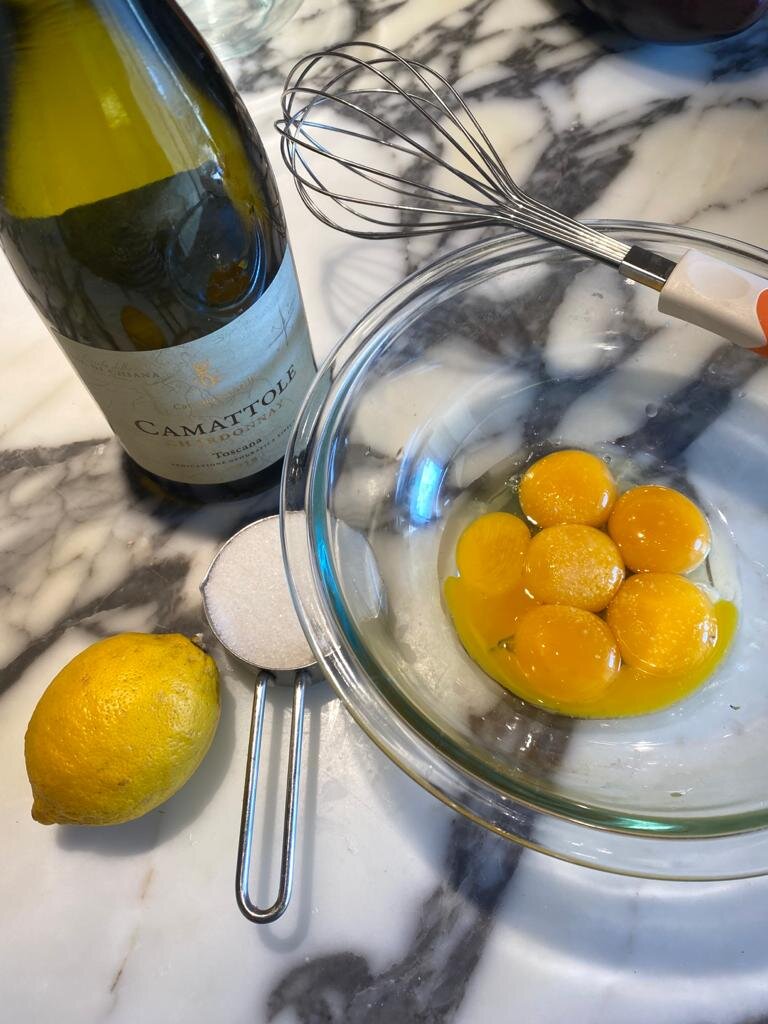Sabayon

As spring ripens into summer, sabayon once again claims a spot amongst my favorite desserts.
This light custard is relatively easy to make, can be prepared hours in advance, and has a luscious creaminess that brings out the best in seasonal fruits. Strawberries, raspberries, blueberries, peaches, plums, apricots, and nectarines all embrace this cloud-like sauce.
A little trivia: People often use the terms zabaione and sabayon interchangeably. But there is a difference: Zabaione is a light Italian custard that originated in the late 1500s and was favored by Catherine de’ Medici, who brought it to the French court. It is made with eggs, sugar, and Marsala wine that are whisked—and thus emulsified—over heat. Sabayon came about in the 1800s when the French had the brilliant idea to nix the Marsala and use Chardonnay or Champagne in its place. Because I dislike the heavy, cloying taste of Marsala, I prefer sabayon to zabaione.
Sabayon
Serves 6
6 egg yolks
1/3 cup sugar
3/4 cup Chardonnay or Champagne
zest of half a lemon or orange
pinch of salt
Fill the bottom of a double boiler with water. If you do not have a double boiler, devise one by using a copper, metal, or glass bowl that will fit over a saucepan of boiling water without the bottom of the bowl resting in the water. Bring the water to a boil.
Off the heat, place egg yolks and sugar in the top of the double boiler (or in the chosen bowl). Begin whisking the yolks and sugar until they are pale and light. This will take approximately three minutes. Alternatively, you can use a hand-held mixer.
Beat in the wine, zest, and salt.
Place the top of the double boiler or the bowl over the boiling water, making sure it doesn’t touch the water. Use a wooden spoon and stir the mixture, scraping the sides and bottom constantly. The yolks should very gradually warm. Have a hot pad ready, and if, at any time, the mixture heats too quickly, remove it from the heat and stir, stir, stir. You do not want to scramble the eggs! It should take at least eight minutes for the mixture to suddenly thicken. Look for the custard to heavily coat the spoon and the foamy top to turn a rich yellow.
Remove from heat, stir, and place your finger in the custard to feel that it is pleasantly warm, almost hot. If not, continue cooking but do not overcook or the eggs will curdle.
When done, let custard cool, stirring a few times. Cover with plastic wrap and refrigerate until needed, up to six hours. Serve over or under any combination of berries or stone fruits.
Title Photo: © ld1976
Sally Uhlmann’s passion for cooking led her to publish a memoir-style cookbook, “Just Cook with Sally.” She splits her time between the States and her farmhouse in Cortona, Italy, when she is not traveling the world. Sally cooks, develops recipes, and writes stories—mostly about the intersection of food, travel, and her life.










